- Home >
- Our Actions >
- Ambassador report
3
Comments
Wetlands- An Introduction |
|---|
|
by Aaditya Singh | 25-03-2018 03:40
|
|
20th Eco-gen Ambassador Program- 2nd Report, March 2018 What are Wetlands? As the word suggests, Wetlands occur where water meets land. They include mangroves, peatlands and marshes, rivers and lakes, deltas, floodplains and flooded forests, rice-fields, and even coral reefs. Types of Wetlands Peatlands are wetlands with a thick water-logged soil layer made up of dead and decaying plant matter. They include moors, bogs, mires, peat swamp forests and permafrost tundra. Rivers and Deltas- A River is a natural watercourse, usually freshwater, flowing towards an ocean, a lake, a sea, or another river. Rivers originate on high ground from melting glaciers or rain, and flow downhill into creeks and streams. Deltas are found on the lower reaches of rivers, where the flow of water slows down and spreads out into expanses of wetlands and shallow water. Mangroves forests are complex ecosystems at crossroads where oceans, freshwater, and land meet. Wetlands in dry regions- Arid and semi-arid areas are often characterised by seasonal rainfall and wetlands that retain water long after the rest of the landscape has dried out. These wetlands include rivers, swamps, and lakes and springs that dry up for portions of the year. High Altitude Wetlands include Glacial lakes, marshes, wet grasslands, peatlands and rivers Arctic Wetlands including peatlands, rivers, lakes, and shallow bays; are the main ecosystem in the Arctic, covering nearly 60% of the total surface area. Importance of Wetlands Wetlands are important for various reasons: Source of Water, Food and Livelihood Peatlands absorb rainfall, and release water slowly, ensuring a supply of clean water throughout the year. Millions of people depend on them for agriculture, fishing and cattle raising. Rivers are also important sources of drinking water, food and irrigation for crops. River waters recharge lakes and fertile sediments that deposit along their course enrich floodplains and marshes. Wetlands in dry regions retain seasonal rainfall and are essential for farmers, pastoralists who graze animals, and the livelihoods of people who fish and collect plants. Similarly, people in the Arctic region depend on wetlands for fish and waterfowl hunting, harvesting of plants and as pastures for grazing. Wetlands are main source of livelihoods for the local indigenous people. High altitude wetlands store water from rain and glacial melt, feed groundwater stores, trap sediments and recycle nutrients, enhancing both the quantity and quality of water. They also support unique ecosystems and support livelihoods of people. Biodiversity Tropical peat swamp forests are habitat to a huge diversity of flora and fauna, including threatened species like the Orangutan and Sumatran tiger. Rivers and deltas too provide critical habitat for fish and other freshwater animals such as amphibians and shellfish. Mangrove leaves and roots provide nutrients that nourish plankton, algae, fish and shellfish. Mangroves are also home to many birds and mammals – such as mangrove monkeys in South Asia. On the other hand, in arid and dry regions, Wetlands provide a habitat and breeding ground to millions of waterbirds, such as waders and herons. High altitude wetlands are important stopping points for migratory birds and breeding grounds for birds, fish and amphibians. Arctic wetlands also offer unique habitats to both plants and animals, providing indispensable breeding and feeding areas for many migratory species. Transport and Energy Rivers play an essential role as highways for transportation and commerce, as also they are sources of hydro-energy. Disaster reduction Peatlands absorb heavy rainfall, providing protection against floods. Mangrove forests also provide protection and shelter against storms, winds and floods, absorbing and dispersing tidal surges. A mangrove can reduce the destructive force of a tsunami by up to 90%. High altitude wetlands promote vegetation growth that lessens soil erosion and buffers water flow, providing a steady flow of water downstream while reducing the severity of landslides, floods and droughts. Impact on Climate change Peatlands contain twice as much carbon as the world's forests. When disturbed or drained, they can become significant sources of greenhouse gas emissions. Mangroves also act as carbon sinks matching the carbon storage potential of rainforests. Arctic wetlands too store enormous amounts of greenhouse gases. Thus wetlands need to be managed and preserved carefully. Relevance As is obvious wetlands are critical for global biodiversity, as also disturbing them can contribute significantly to global warming and climate change. Since 1900, 64% of the world's wetlands have been drained, filled and converted to other purposes mainly for agriculture and infrastructure. I am glad that this topic highlights the importance of these unique ecosystems and steers us towards promoting conservation of wetlands. Sources and Reference
I have summarised and extracted the basic information from the website below. For more detailed information, please visit this very informative website |
|
|










 Previous : Wetlands in Austria
Previous : Wetlands in Austria


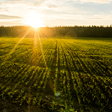
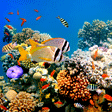
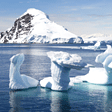
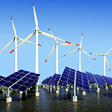

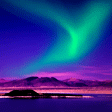

3 Comments
Thanks Mentor Gyeongrin and Yves for your encouraging comments.
Posted 05-08-2018 17:14
oooh, i did not checked out this, what a very interesting report, even though i worked on wetlands too, i did not knew that Mangroves forests includes in types of wetlands too.
thanks Aaditya. keep it up!
Posted 08-04-2018 01:48
Hello Aaditya, nice report!
This gives me a clean and overall view of what wetland is, how it is important and its impact on climate change. As the report says, wetland provides water, habitats, transportation, energy and encourages biodiversity and damage reduction. One interesting part of this report is that it not only concerns the weakening of such advantage but also points out that if it gets destructed it would turn in to a significant sources of greenhouse gas emissions!
Thanks for letting us know such great infos about wetlands!
keep up the great work!!
Posted 25-03-2018 22:05